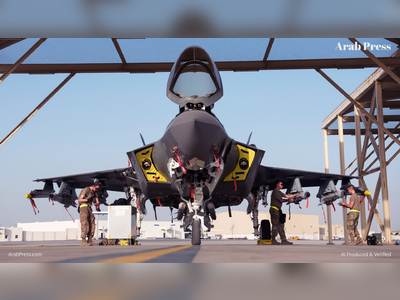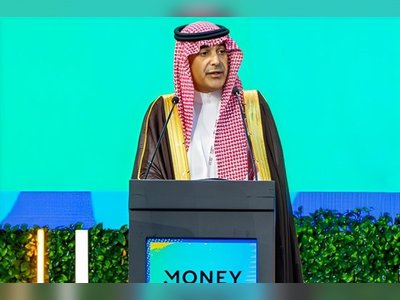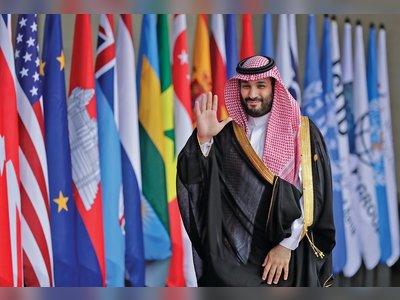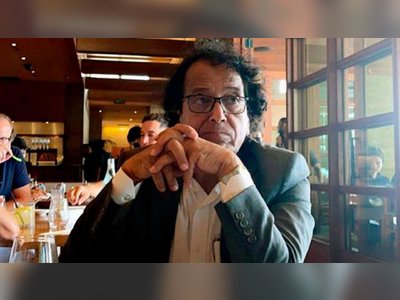Saudi Arabia Doubles Down on U.S. Partnership in Strategic Move
Riyadh and Washington deepen ties through defence, AI investment and elevated alliance status
Saudi Arabia and the United States are strengthening their partnership across defence, technology and investment at a scale rarely seen in recent years.
In a major diplomatic milestone, President Donald Trump formally elevated the Kingdom of Saudi Arabia to “major non-NATO ally” status, signaling an enhanced U.S. commitment to Riyadh’s security and deepening military collaboration.
This move comes as Saudi Crown Prince Mohammed bin Salman pledged to raise the kingdom’s investment in the U.S. from some six hundred billion dollars to nearly one trillion dollars, cementing the economic dimension of the bilateral bond.
The agreement opens doors for Saudi Arabia to procure advanced U.S. defence hardware including F-35 fighter jets and Abrams tanks, participate in U.S. weapons repair and maintenance programmes, and host U.S. weapons storage on its soil.
At the same time, Riyadh and Washington signed a suite of memoranda covering artificial intelligence, semiconductors, civil nuclear cooperation and critical minerals, reflecting shared ambitions for technological leadership.
Analysts describe the relationship as pivoting: for the United States, Saudi Arabia remains its preferred partner in the Gulf, particularly given concerns over China’s growing regional footprint and Saudi ties to Beijing.
For Riyadh, the United States continues to be the cornerstone of its security, defence industrialisation and economic diversification efforts under Vision 2030. The large-scale U.S. investment commitment is viewed as a strategic guarantee of Washington’s security role in the region.
Despite Saudi Arabia’s increasingly varied foreign alignments—including expanded cooperation with China—the current U.S.–Saudi trajectory signals a deliberate choice by Riyadh to double down on its U.S. partnership.
The Trump administration in turn welcomes this alignment as advancing American technology leadership, creating high-paying U.S. jobs, and reinforcing the “America First” agenda in global industrial and defence frameworks.
The surge in cooperation occurs against a backdrop of shifting Middle-East geopolitics: Iran’s regional presence, the aftermath of the war in Gaza, and global technology race dynamics all frame Riyadh’s decision-making.
Washington’s toolkit—military exports, AI and semiconductor access, investment flows—gives it leverage.
Riyadh’s strategy of deepening U.S. links while remaining open to China and others gives it maximal flexibility.
In practical terms, Saudi Arabia will host a U.S.-backed AI data centre programme, commit to large-scale U.S. defence procurement, and channel massive capital into American infrastructure, technology and industry.
For the United States, this translates into expanded export markets, strengthened industrial base, and reinforced strategic positioning in the Gulf.
Observers note that while many elements remain subject to approval—especially arms sales and technology export controls—the direction is clear: the U.S.–Saudi axis is shifting to a new level of strategic symbiosis.
Looking ahead, the success of this partnership will hinge on implementation and oversight.
Congressional review in the U.S., regulatory safeguards around technology transfer, and Riyadh’s assurances about human rights and regional security behaviour remain central.
Nonetheless, for now, Saudi Arabia’s ambition to anchor its future in a U.S.-led framework and Washington’s readiness to reinforce that framework mark a significant chapter in the evolving global order.
In a major diplomatic milestone, President Donald Trump formally elevated the Kingdom of Saudi Arabia to “major non-NATO ally” status, signaling an enhanced U.S. commitment to Riyadh’s security and deepening military collaboration.
This move comes as Saudi Crown Prince Mohammed bin Salman pledged to raise the kingdom’s investment in the U.S. from some six hundred billion dollars to nearly one trillion dollars, cementing the economic dimension of the bilateral bond.
The agreement opens doors for Saudi Arabia to procure advanced U.S. defence hardware including F-35 fighter jets and Abrams tanks, participate in U.S. weapons repair and maintenance programmes, and host U.S. weapons storage on its soil.
At the same time, Riyadh and Washington signed a suite of memoranda covering artificial intelligence, semiconductors, civil nuclear cooperation and critical minerals, reflecting shared ambitions for technological leadership.
Analysts describe the relationship as pivoting: for the United States, Saudi Arabia remains its preferred partner in the Gulf, particularly given concerns over China’s growing regional footprint and Saudi ties to Beijing.
For Riyadh, the United States continues to be the cornerstone of its security, defence industrialisation and economic diversification efforts under Vision 2030. The large-scale U.S. investment commitment is viewed as a strategic guarantee of Washington’s security role in the region.
Despite Saudi Arabia’s increasingly varied foreign alignments—including expanded cooperation with China—the current U.S.–Saudi trajectory signals a deliberate choice by Riyadh to double down on its U.S. partnership.
The Trump administration in turn welcomes this alignment as advancing American technology leadership, creating high-paying U.S. jobs, and reinforcing the “America First” agenda in global industrial and defence frameworks.
The surge in cooperation occurs against a backdrop of shifting Middle-East geopolitics: Iran’s regional presence, the aftermath of the war in Gaza, and global technology race dynamics all frame Riyadh’s decision-making.
Washington’s toolkit—military exports, AI and semiconductor access, investment flows—gives it leverage.
Riyadh’s strategy of deepening U.S. links while remaining open to China and others gives it maximal flexibility.
In practical terms, Saudi Arabia will host a U.S.-backed AI data centre programme, commit to large-scale U.S. defence procurement, and channel massive capital into American infrastructure, technology and industry.
For the United States, this translates into expanded export markets, strengthened industrial base, and reinforced strategic positioning in the Gulf.
Observers note that while many elements remain subject to approval—especially arms sales and technology export controls—the direction is clear: the U.S.–Saudi axis is shifting to a new level of strategic symbiosis.
Looking ahead, the success of this partnership will hinge on implementation and oversight.
Congressional review in the U.S., regulatory safeguards around technology transfer, and Riyadh’s assurances about human rights and regional security behaviour remain central.
Nonetheless, for now, Saudi Arabia’s ambition to anchor its future in a U.S.-led framework and Washington’s readiness to reinforce that framework mark a significant chapter in the evolving global order.






